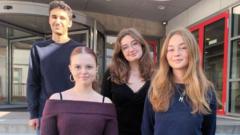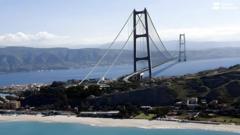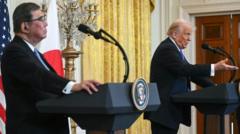Despite its burgeoning pharmaceutical industry, Kalundborg faces demographic and infrastructural hurdles.
**Kalundborg: A Promising Hub or a Struggling Town?**

**Kalundborg: A Promising Hub or a Struggling Town?**
This Danish town beckons with massive investments but grapples with local challenges.
In Kalundborg, Denmark, a town of merely 16,000 inhabitants an hour from Copenhagen, a modern economic revival seems on the horizon thanks to Wegovy's creator, Novo Nordisk. With investments exceeding £6 billion in this locale, primarily aimed at bolstering the production of its popular weight-loss drug, Wegovy, and diabetes treatment, Ozempic, you'd expect a booming economy. However, the reality presents a mixed picture.
Daily, a wave of workers floods into the town, only to leave each afternoon, leading to what locals call the "Novo Queue." Despite significant financial influx—around £400,000 per resident—retaining workers presents a significant challenge. Many prefer to reside in nearby cities, creating a transient labor force that sees mere daytime commuters instead of a thriving, settled community.
Behind the robust investment lies a backdrop of ongoing issues: low school performance, inadequate facilities, and a rising obesity rate among children. The local educators struggle to draw experienced teachers, resulting in low student expectations. Consequently, many young people view their futures outside of Kalundborg, eager to pursue opportunities in larger urban centers.
Local businesses reflect this transience. While lunch hours see a rush of activity in supermarkets and cafés catering to factory workers, clothing and shoe retailers frequently flounder, unable to establish a steady clientele. Economic disparity looms, with many residents pressured by rising costs in Copenhagen, leading some to depend solely on factory jobs for income.
Novo Nordisk stands as Denmark’s powerhouse, accounting for 1% of the workforce, yet analysts warn against over-reliance on the pharmaceutical sector. As the economic growth rate drops significantly when excluding the industry, concerns about sustainability surface. Kalundborg’s mayor remains optimistic amid these challenges, advocating for the town's potential to attract both investment and talent.
The local youth embody this optimism; students express hope for Kalundborg's evolution into a multicultural hub. Global newcomers like Miguel from Spain embrace the opportunities and community, driven to forge lives in Kalundborg. New infrastructure, including a highway to alleviate traffic woes, promises to enhance the town's appeal. Yet, the challenge remains: how to transform Kalundborg into a permanent home for its transient workers and ensure sustainable growth in the coming years.
Daily, a wave of workers floods into the town, only to leave each afternoon, leading to what locals call the "Novo Queue." Despite significant financial influx—around £400,000 per resident—retaining workers presents a significant challenge. Many prefer to reside in nearby cities, creating a transient labor force that sees mere daytime commuters instead of a thriving, settled community.
Behind the robust investment lies a backdrop of ongoing issues: low school performance, inadequate facilities, and a rising obesity rate among children. The local educators struggle to draw experienced teachers, resulting in low student expectations. Consequently, many young people view their futures outside of Kalundborg, eager to pursue opportunities in larger urban centers.
Local businesses reflect this transience. While lunch hours see a rush of activity in supermarkets and cafés catering to factory workers, clothing and shoe retailers frequently flounder, unable to establish a steady clientele. Economic disparity looms, with many residents pressured by rising costs in Copenhagen, leading some to depend solely on factory jobs for income.
Novo Nordisk stands as Denmark’s powerhouse, accounting for 1% of the workforce, yet analysts warn against over-reliance on the pharmaceutical sector. As the economic growth rate drops significantly when excluding the industry, concerns about sustainability surface. Kalundborg’s mayor remains optimistic amid these challenges, advocating for the town's potential to attract both investment and talent.
The local youth embody this optimism; students express hope for Kalundborg's evolution into a multicultural hub. Global newcomers like Miguel from Spain embrace the opportunities and community, driven to forge lives in Kalundborg. New infrastructure, including a highway to alleviate traffic woes, promises to enhance the town's appeal. Yet, the challenge remains: how to transform Kalundborg into a permanent home for its transient workers and ensure sustainable growth in the coming years.





















